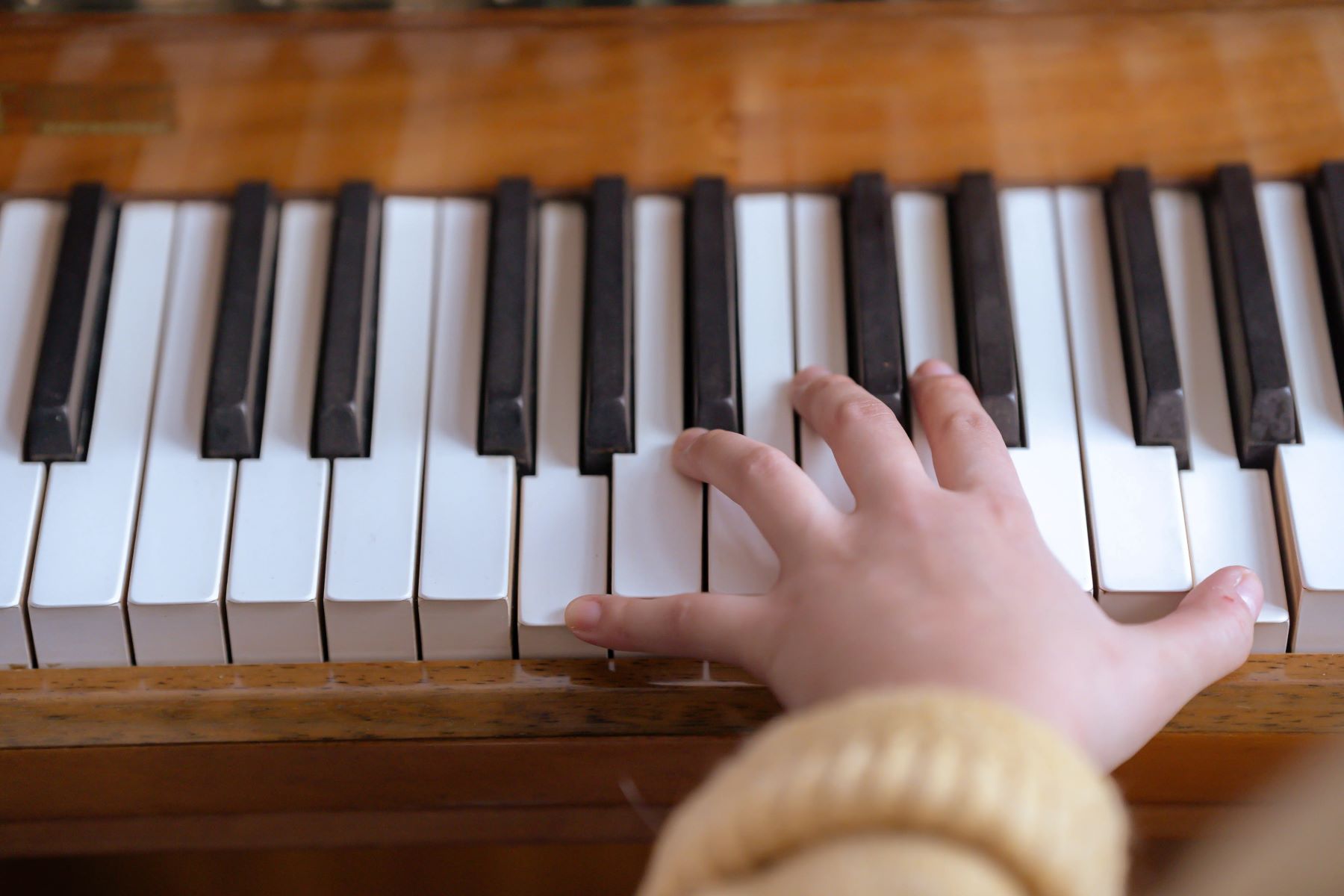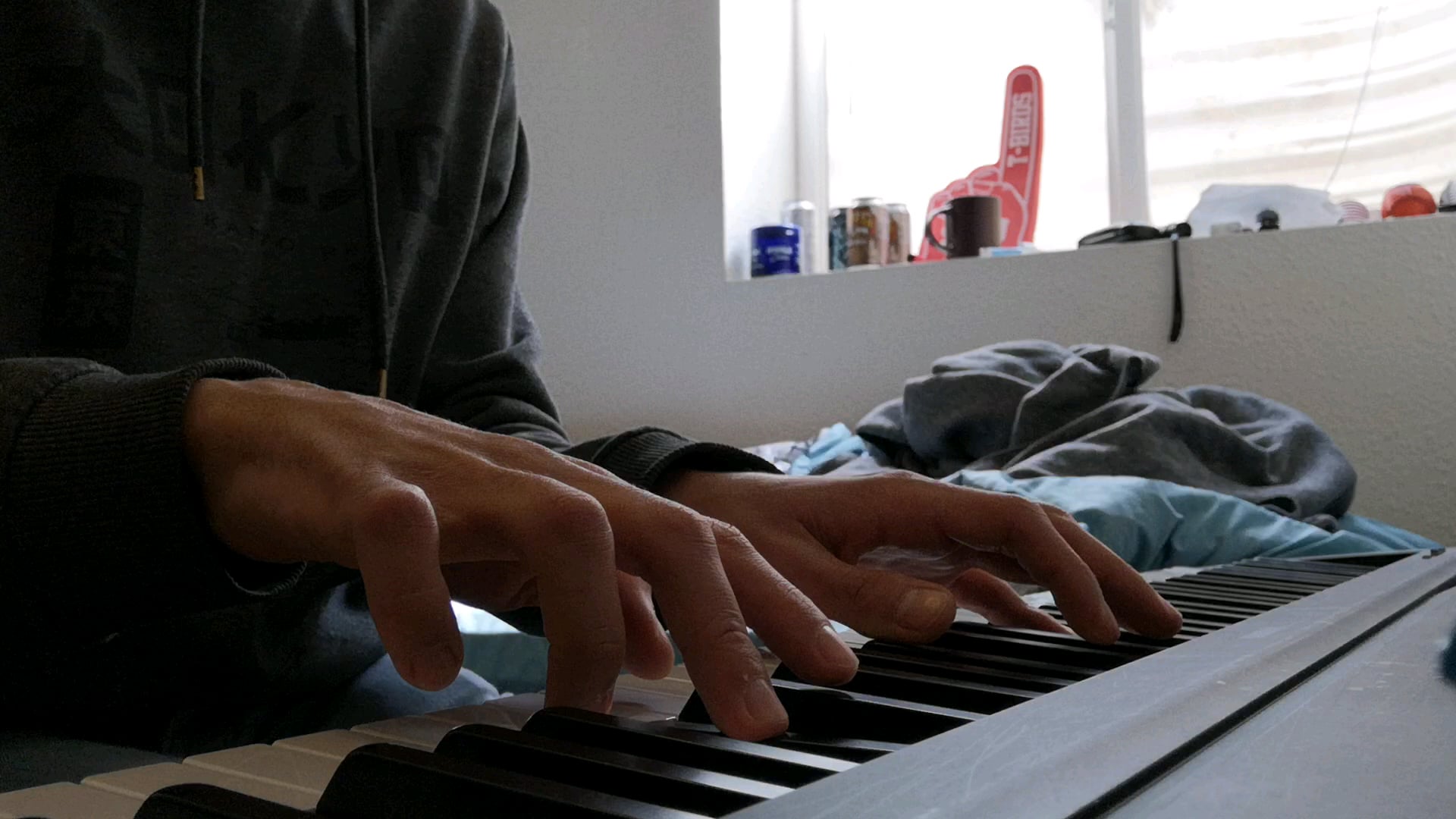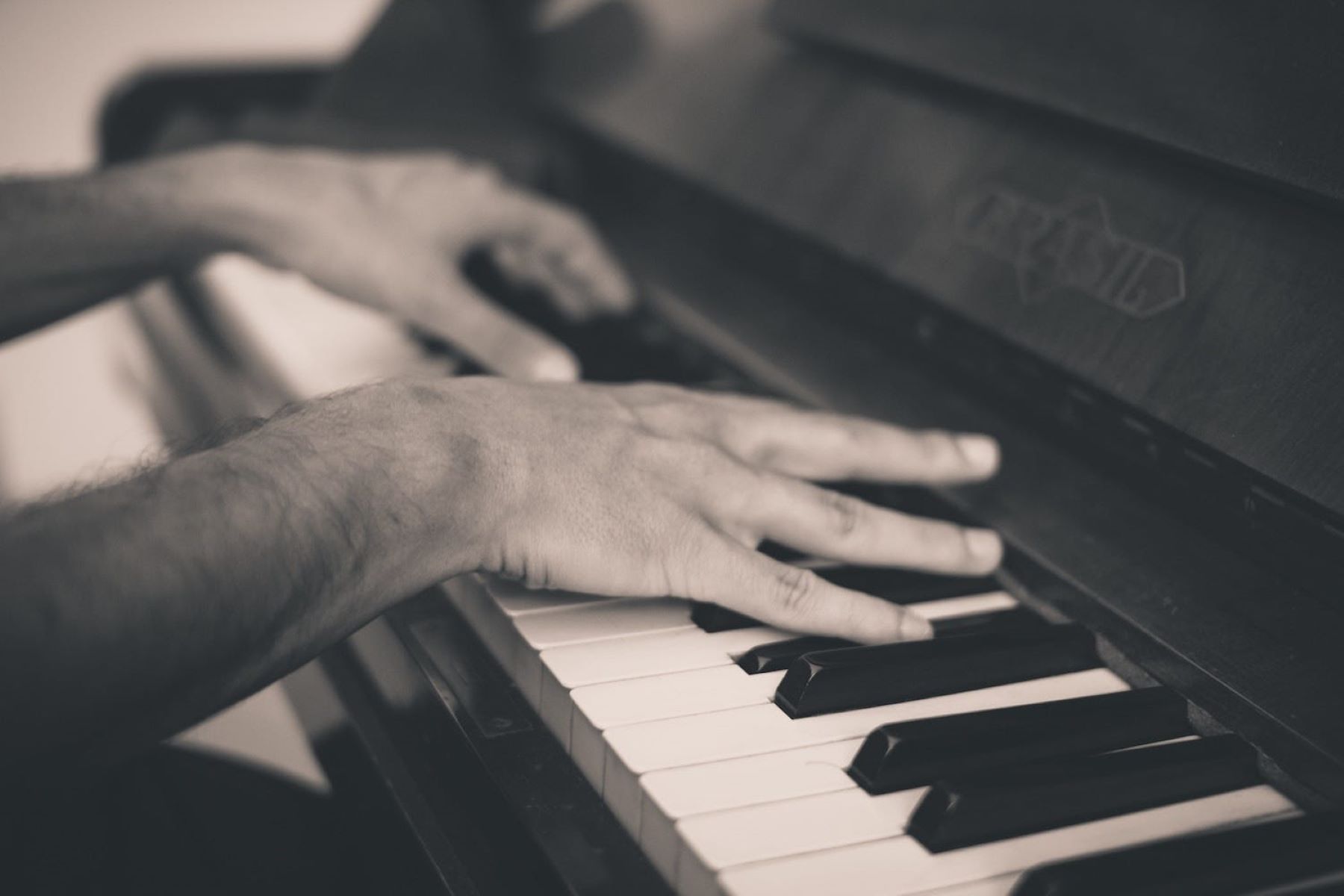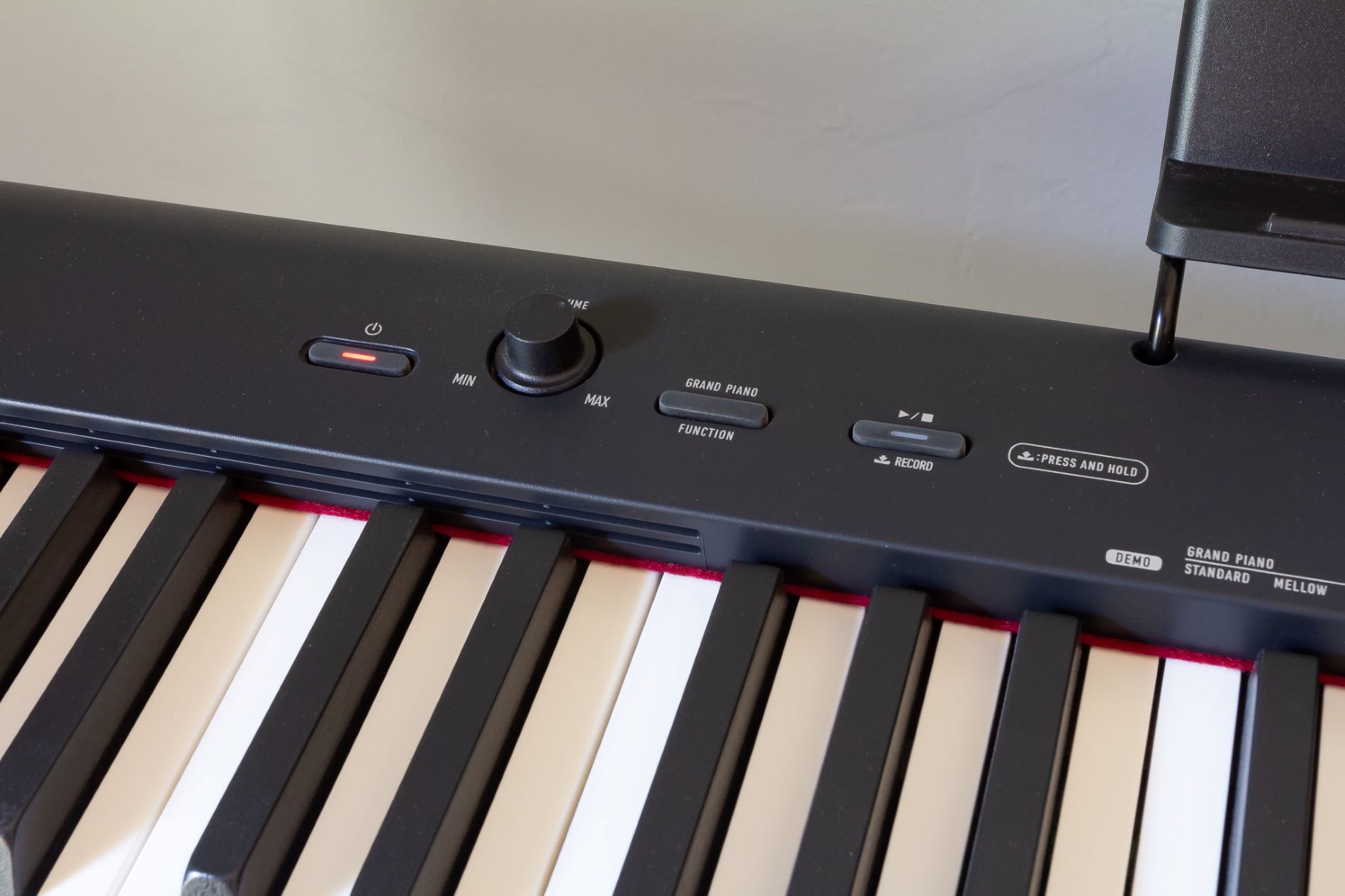Home>Instruments>Piano>How To Play Gospel Piano For Beginners


Piano
How To Play Gospel Piano For Beginners
Published: February 12, 2024
Learn the basics of playing gospel piano for beginners with step-by-step tutorials. Master essential techniques and start playing the piano today!
(Many of the links in this article redirect to a specific reviewed product. Your purchase of these products through affiliate links helps to generate commission for AudioLover.com, at no extra cost. Learn more)
Table of Contents
- Unlocking the Soulful Sounds: A Beginner’s Guide to Playing Gospel Piano
- Embracing the Heart and Soul of Gospel Music
- Building a Strong Foundation: Essential Techniques for Gospel Piano
- Harmonic Foundations: Exploring Chords and Progressions in Gospel Piano
- Infusing Soul and Spirit: Embracing Gospel Piano Playing
- Mastering the Art: Effective Strategies for Gospel Piano Practice
- Embracing the Soulful Journey: A Harmonious Ode to Gospel Piano
Introduction
Unlocking the Soulful Sounds: A Beginner’s Guide to Playing Gospel Piano
Welcome to the soul-stirring world of gospel piano! Whether you’ve been drawn to the uplifting melodies of gospel music or you’re eager to infuse your piano repertoire with the spirit of this genre, you’ve embarked on a remarkable musical journey. Gospel piano is not just about playing notes; it’s about channeling emotions, telling stories, and uplifting spirits through the power of music.
In this comprehensive guide, we will delve into the fundamental techniques, chord progressions, and playing styles that define gospel piano. We’ll explore the unique characteristics of gospel music, unravel the basic piano techniques essential for mastering this genre, and provide practical tips to help you infuse your playing with the soul-stirring essence of gospel music.
As we embark on this musical odyssey, remember that playing gospel piano is not merely about mastering technical skills – it’s about connecting with the music on a deeper, spiritual level. So, let’s dive in and discover the transformative power of gospel piano together. Whether you’re a beginner with little to no experience or an intermediate player looking to expand your musical horizons, this guide is tailored to help you unlock the soulful sounds of gospel piano.
Understanding Gospel Music
Embracing the Heart and Soul of Gospel Music
Gospel music is a powerful and emotive genre that has its roots deeply embedded in the African-American religious experience. It is characterized by its fervent expression of faith, profound emotional depth, and rich musical heritage. At the core of gospel music lies the desire to convey a message of hope, resilience, and spiritual upliftment, making it a genre that resonates with people from all walks of life.
One of the defining features of gospel music is its ability to evoke strong emotions through its melodic and harmonic structures. The use of call-and-response patterns, passionate vocal delivery, and dynamic rhythmic elements creates an immersive and engaging musical experience. Gospel music often serves as a source of comfort, inspiration, and empowerment, transcending cultural and religious boundaries to touch the hearts of listeners worldwide.
From the exuberant and celebratory sounds of traditional gospel to the soul-stirring melodies of contemporary gospel, the genre encompasses a wide range of musical styles. Whether it’s the heartfelt lyrics, the soulful vocal performances, or the uplifting instrumentation, gospel music has the power to uplift the spirit and foster a sense of community and togetherness.
Understanding the essence of gospel music is essential for aspiring gospel piano players. By immersing yourself in the rich history and emotional depth of this genre, you can gain valuable insights that will inform your approach to playing gospel piano. As we continue our exploration, we will uncover the foundational elements of gospel piano and learn how to infuse our playing with the heartfelt expression and soul-stirring resonance that define gospel music.
Basic Piano Techniques
Building a Strong Foundation: Essential Techniques for Gospel Piano
Before delving into the distinct characteristics of gospel piano, it’s crucial to establish a solid foundation in basic piano techniques. Whether you’re a novice or a seasoned player, honing fundamental skills will set the stage for your journey into the realm of gospel music.
1. Hand Positioning: Proper hand positioning is vital for achieving dexterity and control at the keyboard. Maintain a relaxed yet poised posture, keeping your wrists level with the keys and your fingers curved to facilitate fluid movement.
2. Finger Exercises: Practicing finger exercises such as scales, arpeggios, and Hanon exercises can enhance finger strength, agility, and coordination. These exercises lay the groundwork for navigating the intricate chord progressions and melodic embellishments prevalent in gospel piano playing.
3. Dynamic Control: Learning to modulate the dynamics of your playing – from soft, delicate passages to powerful, resonant phrases – is integral to conveying the emotional nuances inherent in gospel music. Experiment with varying touch and pressure to imbue your playing with expressive depth.
4. Pedal Technique: Mastery of the sustain pedal is essential for creating sustained, resonant tones and blending harmonies seamlessly. Practice using the pedal judiciously to achieve a balanced and nuanced sound palette.
5. Chord Voicings: Familiarize yourself with different chord voicings and inversions, as they form the harmonic bedrock of gospel piano accompaniment. Understanding how to voice chords effectively will enable you to create lush, full-bodied harmonies that underpin the soulful essence of gospel music.
By honing these fundamental piano techniques, you will lay a robust groundwork for delving into the intricacies of gospel piano playing. As we progress, we will integrate these foundational skills with the distinct stylistic elements that define gospel piano, empowering you to infuse your playing with authenticity and emotional resonance.
Chords and Progressions
Harmonic Foundations: Exploring Chords and Progressions in Gospel Piano
Central to the rich tapestry of gospel piano playing are the harmonic structures and progressions that underpin the genre’s emotive resonance. From soul-stirring ballads to exuberant praise songs, understanding the essential chords and progressions is pivotal for capturing the essence of gospel music.
1. Basic Chords: Begin by familiarizing yourself with fundamental chords such as major, minor, and dominant seventh chords. These form the building blocks of gospel harmony and provide the harmonic framework for your playing.
2. Extended Chords: Delve into extended chords, including ninth, eleventh, and thirteenth chords, to infuse your playing with lush, sophisticated harmonies. These extended voicings add depth and color to your chord progressions, elevating the emotional impact of your musical expression.
3. Passing Chords: Explore the use of passing chords to create smooth transitions between primary chord tones. Passing chords add fluidity and interest to your progressions, allowing for seamless movement between harmonies and enhancing the overall musical flow.
4. Gospel Progressions: Embrace the characteristic progressions that define gospel music, such as the timeless I-IV-V and ii-V-I progressions. These foundational progressions form the backbone of countless gospel songs, infusing them with a sense of familiarity and emotional resonance.
5. Modal Interchange: Experiment with modal interchange to introduce harmonic color and variation into your playing. By borrowing chords from related scales and modes, you can imbue your progressions with unexpected twists and evocative tonalities, adding depth and intrigue to your musical arrangements.
By mastering these essential chords and progressions, you will unlock the harmonic richness and emotional depth inherent in gospel piano playing. As we continue our exploration, we will delve into the application of these harmonic elements within the context of gospel music, empowering you to infuse your playing with authenticity and expressive resonance.
Applying Gospel Techniques
Infusing Soul and Spirit: Embracing Gospel Piano Playing
As you delve into the art of gospel piano playing, it’s essential to embrace the stylistic nuances and expressive techniques that define the genre. From soulful improvisation to dynamic rhythmic embellishments, gospel piano playing is characterized by its emotive fervor and spirited delivery.
1. Emotional Expression: Infuse your playing with heartfelt emotion, allowing the music to resonate with genuine passion and sincerity. Gospel piano thrives on authentic expression, so channel your innermost feelings into your playing to convey the soul-stirring essence of the music.
2. Dynamic Pianism: Explore the use of dynamic contrasts to imbue your playing with a sense of drama and intensity. From delicate, introspective passages to powerful, exuberant crescendos, dynamic pianism adds depth and dimension to your musical interpretation, capturing the ebb and flow of gospel music’s emotional landscape.
3. Improvisational Flourishes: Embrace the art of improvisation, allowing your creativity to flourish as you embellish melodies and harmonies with spontaneous, expressive flourishes. Improvisation is a hallmark of gospel piano playing, enabling you to infuse your music with personal flair and spontaneity.
4. Rhythmic Vitality: Emphasize the infectious rhythmic vitality that defines gospel music, incorporating syncopated rhythms, lively grooves, and spirited accents into your playing. The pulsating energy of gospel rhythms infuses your music with an irresistible sense of momentum and joyous exuberance.
5. Call and Response: Emulate the call-and-response tradition prevalent in gospel music by creating engaging dialogues between different voices or instrumental phrases. This interactive musical exchange adds a compelling layer of communicative expression to your playing, inviting listeners to actively engage with the music.
By embracing these gospel techniques, you will infuse your piano playing with the soulful spirit and uplifting vitality that define gospel music. As we continue our journey, we will explore practical tips and strategies for honing these techniques, empowering you to embody the soul-stirring essence of gospel piano playing with authenticity and conviction.
Practice Tips
Mastering the Art: Effective Strategies for Gospel Piano Practice
Embarking on a journey to master gospel piano requires dedication, focus, and a mindful approach to practice. By incorporating effective strategies into your practice routine, you can cultivate musical proficiency and deepen your connection to the soulful essence of gospel music.
1. Structured Repetition: Focus on repetitive practice of challenging passages, chord progressions, and techniques. Repetition fosters muscle memory and enhances fluency, allowing you to navigate intricate gospel piano arrangements with confidence and precision.
2. Slow and Steady: Begin practicing at a slower tempo to ensure accuracy and attention to detail. Gradually increase the tempo as you gain proficiency, maintaining control and clarity in your playing as you strive for fluency at faster speeds.
3. Sectional Practice: Break down complex pieces or improvisational segments into manageable sections. By isolating specific passages for focused practice, you can address technical challenges and gradually integrate them into cohesive, polished performances.
4. Expressive Phrasing: Pay attention to expressive phrasing and dynamics, infusing your practice sessions with emotive depth and musical nuance. Experiment with different tonal colors and articulations to imbue your playing with the soul-stirring resonance that characterizes gospel piano music.
5. Listening and Analysis: Engage in active listening to gospel piano recordings, analyzing the playing styles and interpretive choices of accomplished pianists. By immersing yourself in the diverse nuances of gospel piano performances, you can glean valuable insights and inspiration to enrich your own playing.
6. Improvisational Play: Set aside dedicated time for improvisational play, allowing yourself the freedom to explore creative ideas and spontaneous musical expressions. Improvisation nurtures artistic flexibility and fosters a deeper connection to the emotive spontaneity of gospel music.
By integrating these practice tips into your daily routine, you can cultivate a disciplined and purposeful approach to mastering gospel piano. Consistent and mindful practice will not only enhance your technical proficiency but also deepen your musical interpretation, allowing you to embody the soul-stirring essence of gospel piano with authenticity and passion.
Conclusion
Embracing the Soulful Journey: A Harmonious Ode to Gospel Piano
As we draw the curtains on this immersive exploration of gospel piano, it’s evident that this genre transcends mere musical notes; it embodies a profound, emotive narrative that resonates with the depths of the human spirit. Gospel piano, with its rich harmonic tapestries, spirited rhythms, and soul-stirring melodies, invites us to embark on a transformative musical odyssey.
Throughout our journey, we’ve uncovered the foundational elements of gospel piano, from basic techniques and harmonic structures to the expressive nuances that define this genre. We’ve delved into the heart and soul of gospel music, understanding its historical significance and its enduring capacity to uplift and inspire.
By embracing the stylistic embellishments and emotive fervor that characterize gospel piano playing, we have unlocked the keys to infusing our music with authenticity, passion, and spiritual resonance. Through mindful practice and dedicated exploration of gospel techniques, we have cultivated a deeper connection to the soul-stirring essence of this genre, allowing our musical expressions to resonate with heartfelt emotion and genuine conviction.
As you continue your journey with gospel piano, remember that the true essence of this music lies in its ability to touch hearts, uplift spirits, and forge meaningful connections. Whether you’re exploring traditional gospel hymns, contemporary gospel arrangements, or infusing gospel elements into your own compositions, let your playing be a testament to the enduring power of music to transcend barriers and unite souls in harmony.
As you sit at the piano, let the soulful melodies flow from your fingertips, carrying with them the timeless spirit of gospel music. Embrace the art of gospel piano with reverence, exuberance, and a deep-seated passion for storytelling through music. May your journey with gospel piano be a harmonious ode to the soul-stirring power of music, resonating with the timeless echoes of faith, hope, and unwavering resilience.











